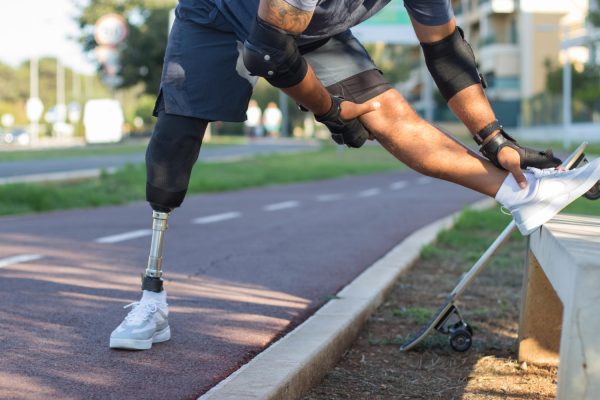In recent years, robotic knee replacement surgery has revolutionized the way we treat advanced knee arthritis. Gone are the days when joint replacements were purely manual and heavily dependent on surgeon experience. Today, with the help of robotic technology, knee replacement has become more accurate, personalized, and efficient than ever before.
If you or your loved one is considering a knee replacement, this blog will help you understand why robotic-assisted surgery might be the best choice.
What is Robotic Knee Replacement?
Robotic knee replacement is not a surgery performed by a robot alone. Instead, it’s a highly advanced procedure where a surgeon uses robotic assistance to place the knee implant with extreme accuracy.
The robot acts as a precise guide — based on your unique anatomy — ensuring the implant is positioned perfectly. This improves joint function, reduces pain, and helps you recover faster.
How is Robotic Surgery Different from Traditional Knee Replacement?
|
Feature |
Traditional Knee Replacemecnt |
Robotic Knee Replacement |
|---|---|---|
|
Planning |
Manual measurements |
3D CT scan-based planning |
|
Implant Placement |
Based on surgeon experience |
Based on robotic accuracy |
|
Bone Cutting |
Manual tools |
Robotic precision tools |
|
Outcomes |
Effective |
More precise and consistent |
|
Recovery |
Gradual improvement |
Faster return to function |
How Does the Robotic System Work?
- Pre-surgery CT scan: A 3D model of your knee is created using advanced imaging.
- Surgical planning: The surgeon plans the implant position tailored to your knee shape and movement.
- Intraoperative precision: During surgery, the robot guides the surgeon, ensuring accurate cuts and alignment.
- Real-time feedback: The system provides real-time data, adjusting the plan if needed.
Who is a Candidate for Robotic Knee Replacement?
You may benefit from robotic-assisted knee replacement if:
- You have advanced osteoarthritis or rheumatoid arthritis
- Conservative treatments like physiotherapy or injections haven’t helped
- You have knee pain affecting your daily life or sleep
- Your knee is stiff, misaligned, or unstable
Benefits of Robotic Knee Replacement
- Better alignment of the implant
- Faster recovery and shorter hospital stay
- Less post-operative pain
- Lower risk of revision surgery
- Improved joint function and satisfaction
Common Types of Robotic Systems
Some commonly used robotic systems include:
- MAKO SmartRobotics™ (Stryker)
- VELYS Robotic (Depuy)
- ROSA® Knee System (Zimmer Biomet)
- CORI Surgical System (Smith+Nephew)
- CUVIS Robotic System (Meril Maxx)
Each system uses different technologies, but all aim for one goal: greater precision and better outcomes.
What to Expect During Recovery?
Recovery after robotic knee replacement is typically:
- Hospital stay: 1–3 days (sometimes even same-day discharge)
- Physiotherapy: Begins on Day 1 after surgery
- Walking: With support on Day 1 or 2
- Return to work: Desk jobs within 2–4 weeks
- Full recovery: Within 6–12 weeks, depending on your health
FAQs
Q1: Is robotic knee surgery safe?
Yes. It’s FDA-approved and done under surgeon supervision. The robot never works independently.
Q2: Will it cost more?
Slightly higher cost, but often balanced by shorter hospital stays and fewer complications.
Q3: Can older adults undergo this surgery?
Yes! In fact, it’s especially beneficial for seniors needing better precision.
Q4: Is the surgery painful?
Pain is much better managed now with modern anesthesia, early rehab, and robotic precision.
Final Thoughts
Robotic knee replacement is a cutting-edge advancement offering patients a more personalized and accurate approach to surgery. If you’re considering knee replacement, talk to Dr Vinayak Ghanate about whether robotic-assisted surgery is the right option for you.
Precision today, better mobility tomorrow.

